The Wool Journey Part 7: uses of different fibre types
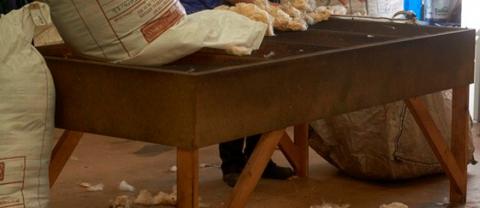
Continuing The Wool Journey, Sue Blacker of The Natural Fibre Company explains the uses of different fibre types. It is said that everything of a pig can be used but the squeak and the same is true of fleeces!
But as not all fibre is wonderful, so even once the best of the harvested fibre has been selected and stored well, the fibre type will determine its end use. Understanding which fibre is suited to what purpose is very important in ensuring that the producer can get the best price for the product and that the processor and end customer get something which will actually work for them. Thus all of The Wool Journey parts 1-4, which described wool types, are very relevant going forward into processing.
Sorting and grading: no need to waste anything!
For both The Natural Fibre Company and Blacker Yarns, the same approach is taken to sorting and grading, to ensure all customers get their fleeces and yarns as effectively processed as possible.
Pictured above is our sorting table across which every fleece coming to us greasy will go.
The key is to find the appropriate use for each part:
- “Reject fibre”
- Dirty, with vegetable contamination, short
- Matted and unable to be pulled apart
- Covered with spray paint (at The Natural Fibre Company, this is known as graffiti!)
- “Useable” fibre
- Clean but very short
- Coarse or hairy
- Everything else!
Reject fibre
Reject fibre means fibre which will probably not be spun into yarns, but that doesn’t mean it is useless! This fibre generally resembles the examples shown as poor quality in The Wool Journey Part 7 and here are some possible uses for it, ideally separated before sending fleeces for processing.
Dags and crutch, belly and neck wool
Wool from these areas may not be clean enough or long enough to be used for spinning yarns, but it can be used for an excellent natural mulch. This fleece contains all the dirt and other nutrients which help as fertiliser, while the fibre absorbs and holds water which can be released to feed plants and when spread around young plants can also act as a mulch and weed deterrent. The additional benefit of dirty, coarse fleece is that slugs do not like moving over it, so it can help protect your young vegetables, salads and other plants from them.
Matted wool
Matted well is too densely tangled to process into yarn, but can be washed or scoured and used to line hanging baskets and for pet beds or chopped into lengths for peg loom rug weaving. The grease and dirt in peg loom rugs can be washed out after weaving, though take not to shrink them too much! Matted fleeces with long locks on the outside can also be carefully felted more evenly underneath to make the increasingly popular sustainable “vegetarian” sheepskins.
Graffiti
Graffiti is a real shame! Many shepherds persist in painting numbers on their sheep (though ewes can generally recognise their lambs without needing to read the number) or otherwise marking them to denote information such as treatments, or other management decisions. Despite everything on the label and the fact that the paint will fade on the animals outdoors, mill scouring will not remove this completely, although the crayon markers used for ram harnesses are an exception. So marking, if it is done, should be on the head, tail, ears or back legs, where the fleece quality will be lower. Occasionally this wool can be used by hand to achieve colour effects on felted items for instance, though it will eventually fade, so is probably best added to the mulch pile along with the dags, etc.
This is the sort of stuff, along with the occasional whole totally matted fleece, which is rejected for processing and the photos below were taken of what falls below our sorting table.

We make all of this into bales of greasy reject fibre, which are then sent off to a shoddy merchant, an expert wool trade activity which collects together various streams of waste and reject fibre from processing and re-cycles them into such things as carpet yarns, felt for underlays and other uses, insulation and some re-cycled yarns using short fibre.
Usable fibre
Short fibre
Typically this is alpaca neck hair and lambs’ wool. Less than an average of 5 cm, 2 inch fibre staple length will be too short to spin, except in specialised wool re-cycling machines, so this is best used for felting and as it is often beautifully fine it works well for attractive felted scarves, jackets and toys. Longer lambs’ wool can be woollen spun and is the basis of most lambswool knitwear as it is also fine and soft.
Coarse or hairy wool
With fibre thickness at around 35 microns and above, this may not make baby clothes but is very hard wearing so is ideal for rug yarns or durable woven goods such as upholstery. This also applies to the coarser back leg wool from some sheep which can be separated from the rest of the fleece for this purpose. In addition, although it is too smooth and coarse to spin easily alone, the leg hair from alpacas can be blended with 50% wool, adding brighter natural colour, and spun for excellent rug and carpet yarns. This type of wool also felts less easily than finer wools so can be scoured and teased to make fluffy stuffings for toys or bedding such as pillows and duvets. Generally coarse wools from mountain and hill sheep need to be blended with downland wool to enable them to pass successfully through the carding process and sometimes longer fibre also needs chopping down to shorter lengths to stop it from acting like a brake and blocking the machine.
The use for wool in carpets and upholstery is vital where there is a fire risk, such as in hotels, large venues and transport of all types, so just because it’s not suitable for next-to-the-skin yarns does not mean it has no value or use – indeed the greater bulk of wool is needed for these purposes.
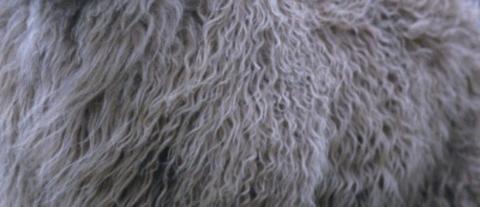
Coarse wool as illustrated above is also great for bedding due to its anti allergenic, wicking and insulation capabilities. Larger scale production can make building insulation as well, where not only the effective insulation properties of wool but again its high temperature of combustion are important: indeed wool will not catch fire until it reaches three times the temperature of many insulation materials with the exception of silicate-based versions. Wool insulation does still need treatment to reduce the risk of moth damage however, though moths much prefer dirty wool to clean so this is helpful, and wall panels can be stuffed and sealed, which means moth access is limited.
Everything else
This means it can be made into yarns and the fibre falls into two main categories:
Medium wool
At 27-35 microns in fibre diameter, medium wool is ideal for weaving as it makes more durable rugs, cushions and throws than the softest wool and the woven or knitted fabrics can be finished by washing, felting, smoothing or brushing to soften the handle and improve the appearance. Medium wool will also work for hand knitting or crochet accessories, socks, gloves and other items which need to work hard, as well as being warm and beautiful. Medium wool can also be felted for crafted sculptures, accessories such as hats and bags, the layers in mattresses (along with coarse wool as well) and many other items. Adult mohair is in this category and may usefully be blended with wools to add lustrous highlights useful for dyeing and increase durability. The example below is Gotland.

Fine wool
At below 27 microns, fine wool is best for the softest yarns, less hard wearing and more suitable for babies and next to the skin and it can of course be blended with other fibres, such as silk, linen, cotton, cashmere, hemp or naturally coloured wools to make a wonderful range of products. Such yarns are usually tolerated next to the skin by most people. There is a further break point at below 20 microns where the wool or alpaca, or kid mohair may be called superfine. Generally everyone likes sub 20 micron fibre and yarns while some people find 20-27 microns insufficiently comfortable except with something between the garment and the skin. The examples below are Blue-faced Leicester and mohair.
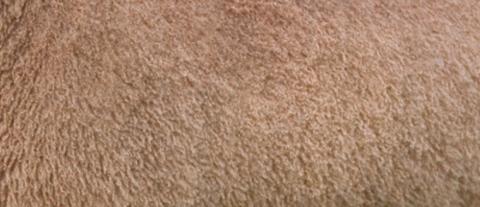
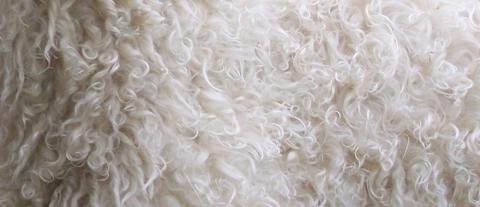
The British Wool Marketing Board classifications give further wool types, and there is a great page on their website, mainly about commercial sheep, including .pdfs of information on the main breeds for wool, somewhat similar to The Natural Fibre Company’s Meet the Animals page.
Key decisions about “everything else”
Each breed of sheep, goat or alpaca, and at each age, as well as each colour, produces fleeces with different characteristics as we have described in The Wool Journey parts 1 to 4. It is important to understand the possibilities for the particular breed and style of wool.
The main attributes to take into account in designing a yarn are:
- Lustre, which will affect dye take-up and appearance of the yarn, is often characteristic of upland breeds and may also mean that the fibre might be coarser, straighter and more technically challenging to spin
- Crimp, which affects elasticity and memory of the yarn – generally downland and primitive sheep breeds make bulkier, more resilient and more stretchy yarns
- Length, which helps for worsted spinning, since the requirement here is generally for an average fibre staple length of 10 cm, 4 inches
- Weight, since Longwool sheep wool, mohair and alpaca fleece are generally heavier than fibre from shorter woolled sheep, so the resulting yarns are leaner and more drapey
Therefore blending these different styles of fibre, or leaving them unblended, will create yarns with different attributes, useful for different projects and styles of knitted and woven fabrics. There is a great opportunity to try things out here! This is where the art of combining the perfect blend of attributes to make a great yarn really starts, whether you want a 100-year life carpet yarn or a delicate lace yarn for a ring shawl.
There are useful books, from the Wool Board amongst others, along with Sue Blacker’s book, Pure Wool, on 17 breeds with associated patterns designed to make the best use of the attributes of their wools. You can also find helpful information at the Meet the Animals page of The Natural Fibre Company website or can call us or other mills, weavers and knitting companies for further information. Deb Robson’s Fleece and Fiber Source Book is also a mine of information on breeds worldwide and is specifically very helpful for hand spinning.
The Wool Journey will now (at last!) start to travel through the processes to make a yarn, and we will then later discuss more about designing yarns!
A word of caution! From this stage onward, we will be processing the wool and although we take great care, each process will do some damage to the fibres compared to their natural state straight from the animal. In particular, washing and drying fibres and then twisting them or dyeing them will all tend to make them harder in handle. So this is why starting with the best quality and handle for the particular purpose is important, as it will increase the possibility of achieving that purpose.
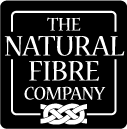 About the author
About the author
As British wool spinners, The Natural Fibre Company add value by processing quantities of fleece from 20 kilograms up to over a tonne and more. As we scour, card, dye and woollen and worsted spin under one roof, we are effectively experts in all aspects of the process of turning raw fleece into high quality yarn. Most of our customers are in the UK for rare and specialist breeds.
The views expressed in our blog are those of the author and not necessarily lowimpact.org's




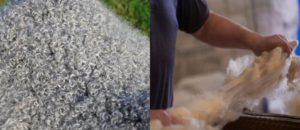 The Wool Journey Part 1: what is wool?
The Wool Journey Part 1: what is wool?
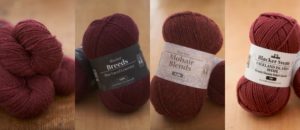 The Wool Journey Part 3: wool attributes – length, crimp and lustre
The Wool Journey Part 3: wool attributes – length, crimp and lustre
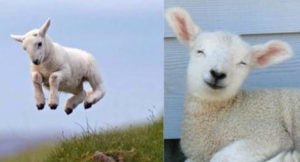 The Wool Journey Part 4: wool attributes amongst breeds, natural colour and health
The Wool Journey Part 4: wool attributes amongst breeds, natural colour and health
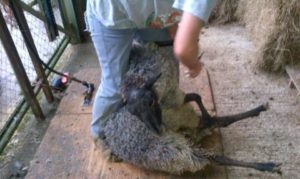 The Wool Journey Part 5: harvesting the wool
The Wool Journey Part 5: harvesting the wool
 The Wool Journey Part 6: grading, sorting and storing of fleeces following shearing
The Wool Journey Part 6: grading, sorting and storing of fleeces following shearing
 The Wool Journey Part 2: wool attributes – thickness
The Wool Journey Part 2: wool attributes – thickness
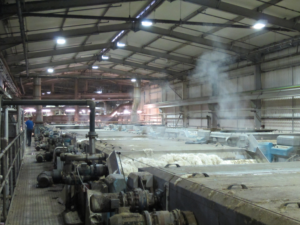 The Wool Journey Part 8: wool scouring and drying
The Wool Journey Part 8: wool scouring and drying
 The Wool Journey Part 9: the first stages of preparing to spin
The Wool Journey Part 9: the first stages of preparing to spin
 The Wool Journey Part 10: using traditional carding machines
The Wool Journey Part 10: using traditional carding machines
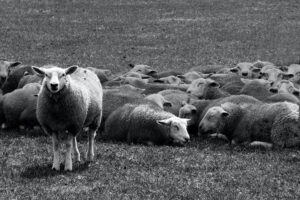 A woeful year for wool in 2020 – and how you can support your local producers
A woeful year for wool in 2020 – and how you can support your local producers
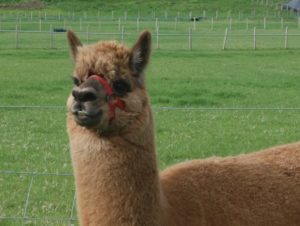 Alpacas
Alpacas
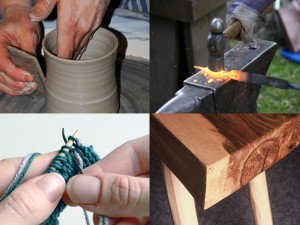 Craft production
Craft production
 Felt making
Felt making
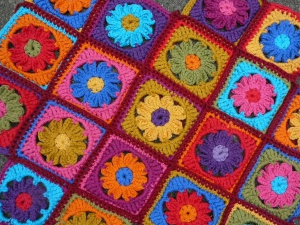 Knitting & crochet
Knitting & crochet
 Low-impact clothes
Low-impact clothes
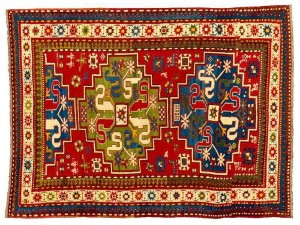 Rugs & floor coverings
Rugs & floor coverings
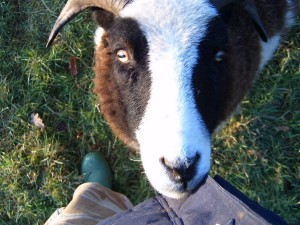 Sheep
Sheep
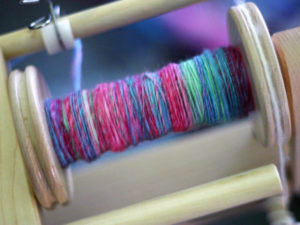 Spinning
Spinning


